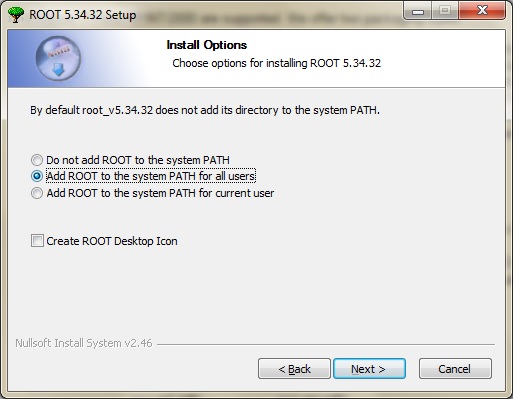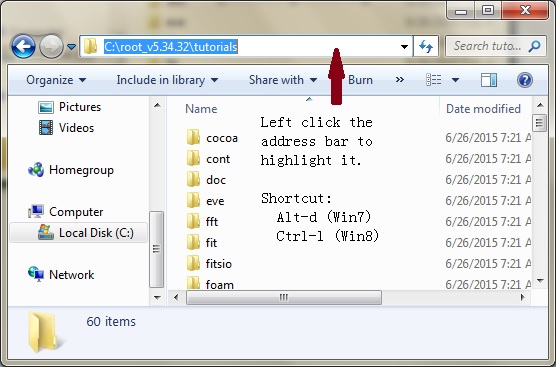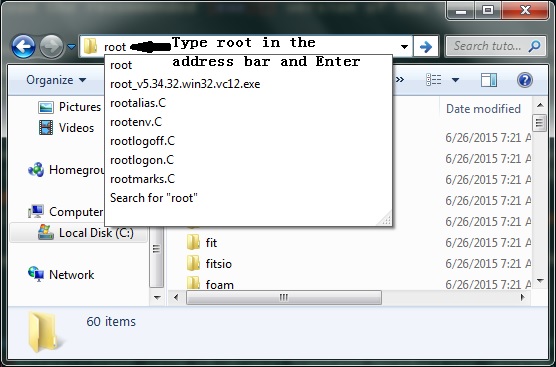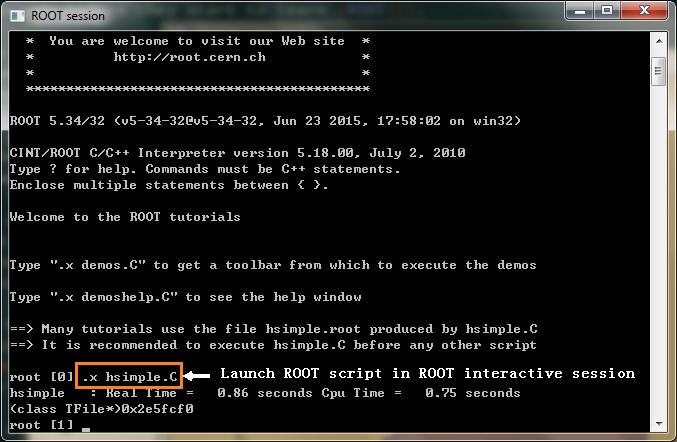LEARN ROOT ON WINDOWS
Jun 29, 2015 learning Windows ROOT
ROOT is a set of C++ libraries for statistic analysis of large data sets encountered in experimental particle physics. It comes with nice command-line and graphic user interfaces and a lot of tutorials and documentation to help people get familiar with its usage. However, it is normally compiled in Unix-like operating systems and accessed from command line. It takes very long for students who only use Windows to get familiar with Unix/Linux SHELL commands before they start to learn ROOT.
The good news is that learning ROOT can be separated from learning Unix/Linux commands. Students can start learning ROOT from day one without any knowledge about Linux server, SSH, SHELL, etc., on Windows. Here is how.
-
go to http://root.cern.ch, HOVER your mouse on the “Download” menu, click All Release in the drop down menu, scroll down to “Version 5” section of the page, click Release 5.34/36 - 2016-04-05, download root_v5.34.36.win32.vc12.exe.
-
double click the downloaded ROOT installer, accept the licence and select to add ROOT to system PATH as shown in the following screen shot and accept all other default settings.

-
Now navigate to
C:\root_v5.34.32\tutorialsin your file browser and left click the address bar to highlight it as shown in the following screen shot:
-
type root in the address bar and Enter to launch ROOT in the current directory:

-
Now you can run ROOT scripts in the folder
C:\root_v5.34.32\tutorialsby typing in the ROOT interactive session.x hsimple.C:
That’s it. It takes about 10 minutes and 5 steps for you to start running ROOT scripts on a Windows machine. You can learn Linux commands in parallel to be prepared for using ROOT in some Linux servers, which is not a must to start with though.
Activities mentions in this site have been supported by the following grants: